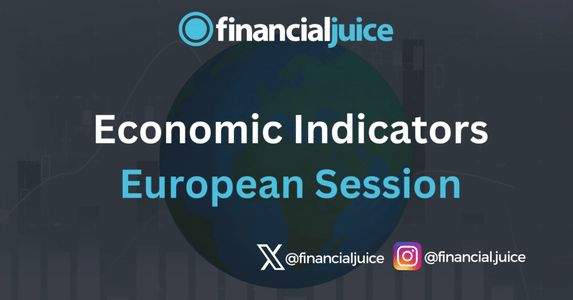
Week Ahead: Economic Indicators (EU)
Hey, Traders!
For the June 10th week, here is a list of all of the major economic indicators being released during the EU Session, with a brief synopsis of what they represent and what to possibly expect from the markets in reaction.
Tuesday 11th June
02:00 ET
UK Unemployment Rate
The ILO (International Labour Organisation) Unemployment Rate released by the National Statistics is the number of unemployed workers divided by the total civilian labor force. It is a leading indicator for the UK Economy. If the rate is up, it indicates a lack of expansion within the U.K. labor market. As a result, a rise leads to weaken the U.K. economy.
What to expect:
Generally, a decrease of the figure is positive (or bullish) for the GBP, while an increase is negative.
UK Unemployment Change
Change in the number of people claiming unemployment-related benefits during the previous month, released by the ONS (Office National Statistics). As the UK provides a lot of benefits to its population, requiring a lot of money, the more people that sign on, the money that will have to be pooled from the government’s budget to support people.
What to expect:
Generally, a decrease of the figure is positive (or bullish) for the GBP, while an increase is negative.
Wednesday 12th June
02:00 ET
UK Manufacturing Production
Manufacturing Production measures the change in the total inflation-adjusted value of output produced by manufacturers. Manufacturing accounts for approximately 80% of overall Industrial Production.
Manufacturing output is the preferred number rather than industrial production which can be unduly influenced by electrical generation and weather. The manufacturing index is widely used as a short-term economic indicator in its own right by both the Bank of England and the UK government. Market analysts also focus on manufacturing and its sub-sectors to get insight on industry performance.
What to expect:
A higher than expected reading should be taken as positive/bullish for the GBP, while a lower than expected reading should be taken as negative/bearish for the GBP.
UK GDP
Gross Domestic Product (GDP) measures the total value of a country’s industrial output over a given period. It consists of the aggregate domestic production of goods and services by individuals, businesses, and government.
GDP data is available in dollar or index form. U.K. GDP QoQ is the comparison of growth from one fiscal quarter to the next, represented in a percentage format.GDPQoQ is a leading indicator of U.K. economic health. High levels of GDP growth are viewed as being positive for U.K. indices as well as the GBP.
What to expect:
Low levels of growth are negative to most asset classes and are common to recessionary cycles. The Bank of England (BOE) places a great deal of emphasis on monthly and yearly GDP. Robust growth is often a prelude to monetary tightening, while stagnate levels provide an environment conducive to Quantitative Easing (QE).Traders monitor GDP (MoM) releases closely. Abnormal reports may cause rapid buying or selling of the U.K. indices or GBP. Currency, equities, and commodities markets all exhibit enhanced degrees of volatility surrounding the GDP release.
German HICP
The Harmonized Index of Consumer Prices is an index of consumer prices calculated and published by Destatis, on the basis of a statistical methodology that has been harmonized across all EU member states. HICP is a measure of prices used by the Governing Council of the EU to define and assess price stability in the euro area as a whole in quantitative terms.
What to expect:
By tracking inflation, whether high or low, rising or falling, investors can anticipate how different types of investments will perform. Over the long run, the bond market will rally (fall) when increases in the CPI are small (large). The equity market rallies with the bond market because low inflation promises low interest rates and is good for profits.
Friday 14th June
02:45 ET
French CPI
The consumer price index (CPI) is a measure of the average price level of a fixed basket of goods and services purchased by consumers. Monthly and annual changes in the CPI represent the main rates of inflation. The national CPI is released alongside the HICP, Eurostat’s harmonized measure of consumer prices. A flash estimate was released for the first time in January 2016 and is now published towards the end of each reference month.
Inflation is an increase in the overall prices of goods and services. The relationship between inflation and interest rates is the key to understanding how indicators such as the CPI influence the markets – and your investments. As the rate of inflation changes and as expectations on inflation change, the markets adjust interest rates. The effect ripples across stocks, bonds, commodities, and your portfolio, often in a dramatic fashion.
What to expect:
A higher than expected reading should be taken as positive/bullish for the EUR, while a lower than expected reading should be taken as negative/bearish for the EUR.


